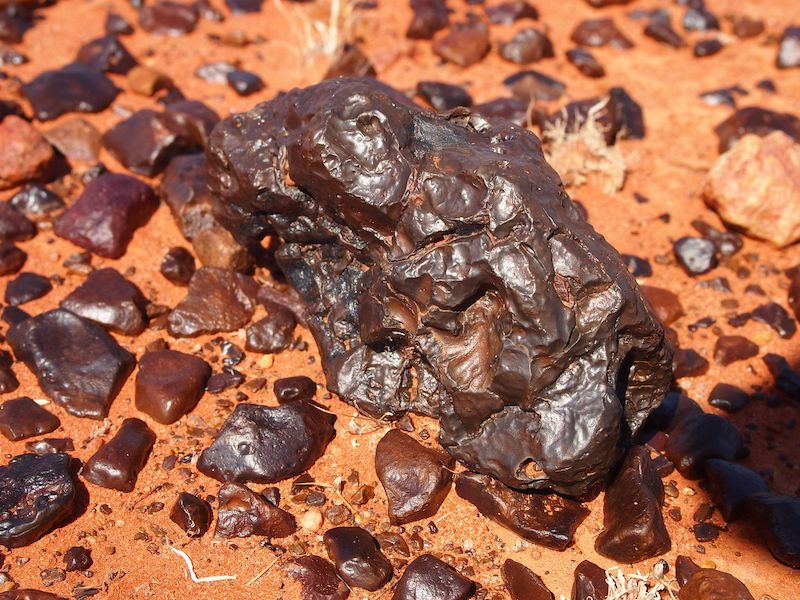
Purple rocks on Mars
Mars is often called the red planet. And for good reason, since it looks red in telescopes and Mars’ surface, as seen by landers and rovers, is covered by reddish dust. Even the sky on Mars has a pinkish hue. But the Perseverance rover has seen some additional pops of color that have scientists intrigued.
Geochemist Ann Ollila and others at Los Alamos National Laboratory in New Mexico talked about this recently. She spoke of purple rocks on Mars at the annual American Geophysical Union meeting in New Orleans in late 2021, and National Geographic later reported on it. The rover spotted the purple coloring in rocks in its landing area, Jezero Crater on Mars. The rocks have unusual purple splotches and coatings. What are they?
EarthSky’s 2022 lunar calendars are available now! Guaranteed to sell out, so get one while you can.
Varnishes and blobs everywhere
In fact, the purple coloring on the rocks seems to be common at Perseverance’s landing site. The rover has spotted them practically everywhere it looks. But the coloring does vary a bit. On some rocks, it looks like a smooth varnish. On others it’s more like blobs of paint. Perseverance has seen it on rocks and stones of various sizes, from larger boulders to small pebbles.
From the paper:
The NASA Perseverance Mars rover has been exploring Jezero Crater since February 2021. During that time, several rocks with potential coatings were observed. Rock coatings can record the interactions of rock surfaces with atmosphere, regolith and water and are important targets for understanding environmental conditions.
So, how did this purple coating form? Ollila told National Geographic:
I don’t really have a good answer for you.
So this is yet to be figured out and Ollila said scientists want to continue to study the mysterious purple markings.

Not a surprise, but unique
Space scientists have seen coatings on Martian rocks before. So, in that sense, these purple coatings on rocks in Jezero Crater aren’t a surprise. Even the early Viking 1 lander spotted some interesting patches – in this case, greenish – on nearby rocks.
But the purple rocks seen by Perseverance have some unique characteristics. The rover used its SuperCam instrument to analyze the coatings in more detail. The laser vaporizes a tiny bit of the rock and makes it into a powder that can then be analyzed.
Even the microphone on the rover helps determine things, like the hardness of the rock, by listening to the laser’s impact on the rock’s surface.

Purple rocks on Mars: First testing results
SuperCam showed that the coatings are enriched in hydrogen and sometimes magnesium. In addition, images from Mastcam-Z suggest that they also contain iron oxides. Both the hydrogen and iron oxides point to past water being involved in the formation of the coatings. That shouldn’t be too surprising, perhaps, since this area in Jezero Crater used to be a lake a few billion years ago.
In that regard, the coatings should provide valuable clues about what conditions were like when this region was once much wetter.
In addition, the purple coatings themselves are softer than the underlying rocks. They are also chemically distinct from the rock. This would suggest they formed on top of the already-existing rocks, and scientists are trying to probe the specific process that might have made that happen.
Could microbes be responsible?
One of the most interesting aspects of this research is that the coatings are reminiscent of similar ones on Earth known as desert varnish. In many of those, cyanobacteria help create the colorful veneers. Environmental microbiologist Chris Yeager at Los Alamos, who also studied the rocks, told National Geographic that these varnishes contain
… the who’s who of known radiation-resistant bacteria.
On Earth, desert varnishes act as a kind of sunscreen to help protect earthly microbes from the sun’s radiation. Could the same thing happen on Mars? As of now, the varnishes found by Perseverance and other rovers and landers aren’t proof of life. But these results – like so many others on Mars – are tantalizing.
Earthly varnishes tend to contain manganese though, which hasn’t been found yet in these purple coatings. But the Curiosity rover did previously find dark coatings that were rich in manganese.
And, even without manganese, it’s still possible that similar life-related processes could create the purple coatings. As Lanza said to Nat Geo:
Who knows what Martian microbes do?
Location, location, location
There’s another aspect of the purple Mars rocks that scientists are puzzling over as well. Even though Jezero Crater was once a lake, the colored rocks seen so far are not in exposed ancient lake sediments but rather formed from cooling magma (the same sorts of rocks found in semi-liquid form under the surface of a planet, called lava when it breaks through a planetary surface).
So how did these rocks become saturated with water? And why are they now in this location instead of the sediments? And, when Perseverance reaches areas where the sedimentary deposits are exposed, will it continue to find these rocks? We’ll just have to wait and see.

Bottom line: NASA’s Perseverance rover on Mars has found rocks with odd purple-colored coatings and splotches on them. What are these purple Mars rocks? Could they be signs of microbial life?











